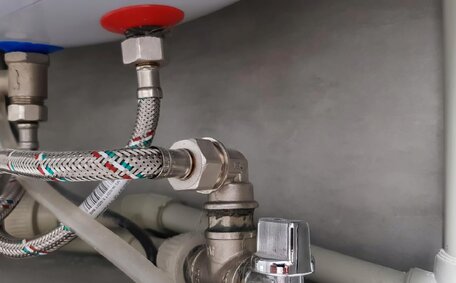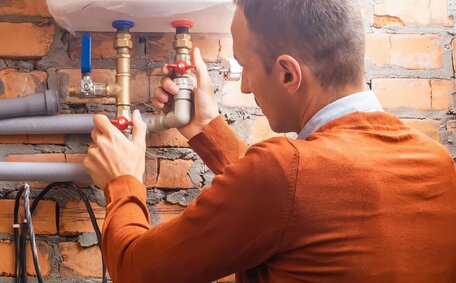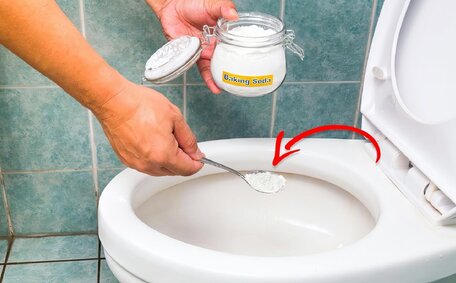Understanding How a Sump Pump Works
A sump pump is essential for preventing basement flooding. It works by collecting excess water that seeps into a sump pit, usually located in the lowest part of a basement, and pumps it out through a discharge pipe away from the home.
Your primary sump pump system consists of:
- Sump pit - A strategically crafted basin in the basement crawl space designed to collect water efficiently.
- Sump pump - The electric device designed to remove water quickly from the sump contents, typically featuring a check valve to prevent reverse flows.
- Switch float arm - Senses the water level and toggles the pump on and off.
- Discharge pipe - Transports water to the outdoors.
The sump pump activates as the float switch, responding to rising water levels, reaches a predefined height. It then pumps the accumulated water out through the discharge pipe, directing it away from your home’s foundation.
Regular maintenance of your sump pump is crucial to prevent flooding, property damage, and mould growth. A high-quality pump and diligent care are critical to keep your basement dry.
Common Causes of Sump Pump Failure
Knowing the causes of sump pump failure is crucial to prevent flooding and water damage.
Mechanical Failure
Like any apparatus with moving parts, sump pump problems can occur over time. Issues like broken impellers, jammed motors, cracked housings, or worn bearings are common causes sump pump malfunctions, leading to a stop in working properly.
To prevent breakdowns, it’s recommended to replace your sump pump every 5-7 years, or every 3-5 years in high water table areas or places with frequent storms, like North Epping.
Power Outage
To safeguard against power cuts, investing in a battery backup system is wise. Key factors like a fully charged backup battery, proper backup pump, and functional float switch become vital safeguards during outages.
Clogged Pump
Debris falling into the pit can block the pump inlet, which might cause pump malfunctions, leading to standing water due to restricted water flow. An accumulation of debris including silt, foliage, or toys can hinder the pump’s ability to manage any water ingress.
As a homeowner wondering 'What can I do to prolong the life of my sump pump?', you should make it a point to inspect and cleanse the pump’s inlet screen every 3 months. Eliminating debris accumulation is a reliable strategy to help prevent sump obstacles, guaranteeing superior pump performance.
Signs Your Sump Pump is Failing
There are a few key signs that indicate your sump pump may be failing:
Unusual Noises
Listen for unusual sounds from the pit, like loud humming or grinding, which could indicate the pump isn’t operating correctly. These can signal issues like a stuck impeller or failing motor bearings.
Frequent Cycling On/Off
Should you detect your sump unit often cycling or struggling to pump out the rising water, there’s no mistaking it for a sign of diminishing operational efficiency.
Pump Running Constantly
If your pump stops working entirely, it may signal a clog requiring you to intervene, possibly with a wet-dry vacuum for an overwhelmed system.
Visible Rust
Check around the pump housing and inlet for rust spots or flaking metal. This shows corrosion occurring due to constant water exposure.
Water accumulations, often due to sump pump issues, pose a direct threat that requires prompt action to protect your home. Overlooking puddles or indicators of flooding is not merely risky for your property, but could end up jeopardising your insurance cover, accentuating the necessity for sump pump servicing or replacement.
Stay vigilant to these warning signals to promptly address issues when sump pump malfunctions arise, thwarting catastrophic water damage to your home.
Preventive Maintenance
Cleaning and Inspections
Ensuring your pump is in top condition is critical to keep your home dry. Follow these tips:
- Clean the sump pit of any debris every 3 months to allow water to flow freely.
- Check the float switch operation annually to make sure pump turns on and off appropriately as the water level changes.
- Inspect the discharge pipe to ensure no cracks or blockages inhibit water flow.
- Replace the float switch every 2 years or when damaged.
Testing
Annually testing your sump pump’s performance is vital, especially before inclement weather:
- Pouring a bucket of water into sump to trigger the pump.
- Ensuring the pump run begins and proceeds smoothly.
- Checking that the water discharges at least 20 feet away from your home’s foundation.
Addressing minor issues promptly ensures your sump pump functions when necessary.
Troubleshooting Issues
Should you find your sump pump malfunctioning, consider these troubleshooting steps before seeking professional help:
Check the Power Supply
Ensure the pump is plugged in and the circuit breaker has not tripped. Try resetting the breaker switch. Test other nearby outlets to ensure there are no home electrical issues.
Inspect the Sump Pit
Examine the sump basin for any debris, silt, or objects blocking the pump inlet screen. Remove any obstructions so water can flow freely.
Assess the Discharge Line
Ensure that the discharge pipe is free from cracks or blockages and extends at least 3 metres from your home to prevent water flow obstruction.
Trying these tips can unravel problems, explaining how to effectively identify and fix them before requiring a North Epping plumber.
DIY Repairs vs Professional Help
When minor issues arise with your sump pump, there are some basic troubleshooting and repairs sump pump can be attempted by you as a homeowner before calling in a professional.
What You Can Do Yourself
Consider these DIY fixes if you encounter sump pump dysfunctions:
- Check that the pump is plugged in and hasn’t tripped a breaker
- Assess if there’s debris clogged around the pump impeller or float arm
- Clear out any obstructions in the sump pit or discharge line
- Tighten fittings or replace old discharge pipe showing cracks
When to Call the Professionals
While maintenance may fix minor issues, complex repairs or replacement should be handled by a professional plumber to ensure safety and warranty preservation.
- Electrical hazards from improper wiring
- Water damage from failing attempted fixes
- Voiding your sump pump warranty
They also offer warranties and guarantees on new equipment and installations for peace of mind.
Backup Systems
An auxiliary backup system provides essential support for your basement waterproofing, offering continuous drainage when your sump pump fails. This is especially vital for homes prone to power outages or severe weather conditions.
Battery Backup
A backup sump pump system, comprising a battery, charger, and a secondary pump, ensures your sump pump continues to operate during power outages — a common scenario during storms.
Battery backup runtimes vary from 2 hours to days depending on the model. Check your battery every 6 months and have a plumber test the auto-switching functionality annually.
Water Sensors
Water sensors placed strategically can alert you to potential water issues in your basement due to sump pump failure. If your sump pump stopped functioning, the sensor triggers an audible alarm to make you aware of the rising water.
This early warning system gives you time to decide what to do when your sump pump alerts you about rising water or, if necessary, seek immediate assistance from North Epping Plumbing.
Integrating backups like water sensors offers peace of mind during pump failures and drainage system uncertainties.
Replacement Considerations
When ongoing issues occur with an ageing or faulty sump pump, replacing the entire system may be more cost-effective than continuing repairs.
Determining Determining When to Replace Your Sump Pump
- It is over 5 years old
- Repair costs exceed 50% of a new pump price
- Failures become frequent (more than once a year)
- The pump seems weak, rusty or loud
Choosing a New Pump
Opt for a 1/3 HP cast iron pump for the best durability. Look for:
- An inlet screen filter to prevent clogs
- A stainless steel float switch
- A 3-year warranty or longer
Upgrading to a higher capacity, efficient pump offers better defence against flooding water incidents.
The professionals at North Epping Plumbing can evaluate the optimal choice for your sump pump system as a fitting replacement.
It is over 5 years oldRepair costs exceed 50% of a new pump priceFailures become frequent (more than once a year)Choosing the Right Pump
Pump Type
Sump pumps are primarily categorised into two types: submersible and pedestal:
- Submersible pumps sit inside the sump pit, completely immersed in water. They operate quietly and efficiently.
- Pedestal pumps rest outside the pit. They tend to be louder but cheaper to service as the motor is easily accessible.
Horsepower (HP)
It’s crucial to choose the correct sump pump horsepower, correlating with the motor’s power to fulfil your home’s needs. Typically, a 1/3 to 1/2 HP motor is suitable for most homes; a smaller motor may be inadequate.
Pumping Capacity
Select a pump equipped to manage the amount of water, ideally double the volume entering your sump pit, gauged in litres per hour. Our North Epping plumbers can determine your needs.
Reliable Brands
Stick with reputable brands offering long warranties like Zoeller, Liberty Pumps, or Glentronics. Cheaper pumps often fail quicker.
For expert guidance on the most suitable sump pump for your home and to preserve your system, contact North Epping Plumbing on 1300 349 338 or [email protected].






